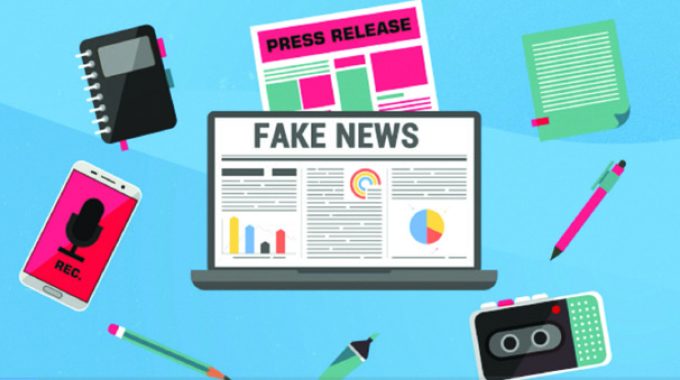Political cartoons crossing the line
Knowledge Mushohwe
POLITICAL cartoons are not a new phenomenon. In the Western world where their history is relatively longer than in developing countries, scholars have identified categories and possible functions of the political cartoons. But based on the contents of political cartoons in Zimbabwe, particularly evident during election time, differences exist between Western world political cartooning and those published in Zimbabwe.
Charles Press, a prominent scholar in the field of political cartoons identified three different categories of editorial cartoons in 1981.
He, however, noted that one of them is too broad and requires further subdividing. Researchers Haydon Manning and Robert Phiddian identified a fourth category.
The first category consists of the descriptive political cartoon. This is arguably the most neutral of all since it does little more than describe situations or events, albeit with a little humour.
It may well make readers express amusement, but only in response to general humour rather than satire.
It is a very basic form of comic commentary that comments on the affairs of the day, and its objective is to merely amuse readers while their chief side effect, according to Manning and Phiddian, is to naturalise the political process for the audience.
The authors add that just about every cartoonist at some point develops this sort of cartoon, when they lack strong convictions about the subject they are working on.
The second category comprises the laughing satirical cartoons. These are most common in Western-style democracies. They have a “corrective” tone that views the political system the cartoonist is commenting about as generally legitimate, but highlights the need for reform and for the politicians and the powerful to modify their behaviour. These cartoons accept the legitimacy of authority, but they point out whatever flaws inherent in the system.
They are the checks and balances of a democratic system and they make it difficult for people to get away with abuses of common standards or morality, probity, and wisdom. This category is especially valued in the West since it encompasses and embraces general developed world democracies by valuing freedom of expression. The destructive satirical cartoon found in the third category is not as lenient as the laughing satirical cartoon.
In fact it is “revolutionary”, and fails to accept the legitimacy of the political system about which they comment. They are not merely critical but use language and signs bordering on contempt, radicalism and hate.
Though in rare cases the satire may be harmless humour, Press states that it is mostly hate that shines through, uncontrolled and slightly insane, since the drawing is meant to be cruel and to hate.
Destructive satirical cartooning is clearly extremists’ views that come out of revolutionary fervour or social despair. Given the nature of the message in them, they are not widely distributed. They tend overwhelmingly to circulate among the already “converted”, therefore seldom change minds, though they may strengthen revolutionary cadres in their convictions.
Extremists’ groups such as religious militants or political organisations seeking a complete overhaul of the system would use such drawings in their publications to strengthen or reinforce socio-political, or spiritual ideologies.
Cartoons that depict savage indignation form the third category. This category argues that it is possible for an editorial cartoon to express quite deep reservations about the established patterns of distribution of power and resources without hating the system and its minions or seeking their wholesome destruction.
They seek revision of the world without demanding revolution. For savagely indignant cartooning, discussing the legitimacy of the system and those who hold office is not the most important issue), but poorly handled national issues or scandals within the political system are.
For instance, Morgan Tsvangirai’s stance on homosexuality, President Zuma’s rape trial and former US president Bill Clinton’s sexual scandals fall in this category. The tone of these cartoons is direct and more urgent, and there is a sense that the issues covered are of great concern. Such political cartoons, however, do not propose a systematic solution to society’s ills. The primary objective of these cartoons is to say “irregardless of whether or not things are OK in this country, this act/inaction is rotten. Any citizen of good faith needs to concentrate on fixing this plight”.
A number of political cartoons created for Zimbabwean newspapers fall into the above categories. A fifth category, based on the general meaning and form of the majority of Zimbabwean political cartoons may be identified.
Towards election or during times when a gulf exists between opinions in the mainstream media, a category I would like to call advocacy political cartoons is evident. Such cartoons have a double function – to glorify one side and treat the other with open condemnation.
Zimbabwean cartoonists, in a print media paradigm that may be defined as mildly polarised tend to go along with the newspaper’s official editorial position.
It is perhaps less worrying for the public media as it is hardly a secret that the public media values nationalism, patriotism and pan-Africanism, ideas that are supported by political institutions that political cartoons on that side of the spectrum venerate, and detested by the other side. More worrying is when, in their political cartoons the private press eulogise error-prone and dubious political institutions simply because they dislike the more dominant organisation.
Political cartoons in the private press appear to ignore the MDC-T’s policy-based blunders such as their stance on land reform, sexual orientation, state security and economic sanctions, but pick the little “victories” and give the impression that the former opposition party has the capacity to not just lead, but positively change the lives of every Zimbabwean.
As a result, most Zimbabwean political cartoons have failed to objectively assess political figures’ credentials by openly taking sides. Working under the presumption that one political side is perfect and without blemish, and the other so bad that nothing positive about it is worth mentioning robs the readers of a fair assessment of the Zimbabwean political landscape.
One of Zimbabwe’s laws, Public Order and Security Act (POSA) has a section that relates to political cartoon content. Section 16 of the law prohibits the publication of statements undermining the authority of the President or that are abusive, indecent or false about or concerning the President.
A number of political cartoons published by the independent media resemble destructive satirical cartooning in that they fail to recognise the legitimacy of a constitutionally-elected President of Zimbabwe. One example of such was an unsigned political published by zimonline.co.za on 30 April 2008.
It showed two men walking down a dusty sub-urban road while looking at a newspaper billboard that stated, “Tsvangirai seeks asylum in Botswana”. One of the men is drawn saying to the other, “That should read, elected leader flees unelected leader”.
The cartoon insinuated that Morgan Tsvangirai was the legitimate leader of Zimbabwe and was fleeing President Mugabe, who it says was unelected. The cartoon was published after votes had been cast but well before the announcement of results.
Given that MDC-T’s Tendai Biti faced treason charges for similar utterances, this should be viewed as serious. If that is not likely to cause alarm and despondency, then I don’t know what does!
Instead of offering blind support to the political side they favour and lacing their depictions of characters they dislike with open hate and contempt, Zimbabwean cartoonists should make unbiased assessments of events and people so that the readers can decode the messages and understand the political landscape that they are very much part of.
When political cartoonists are no longer observers and commentators, when they become political activists with skewed scales of assessment and interpretation, when they become mere extensions of partisan political ideology, then the death of political cartooning in Zimbabwe may not be far away.









Comments